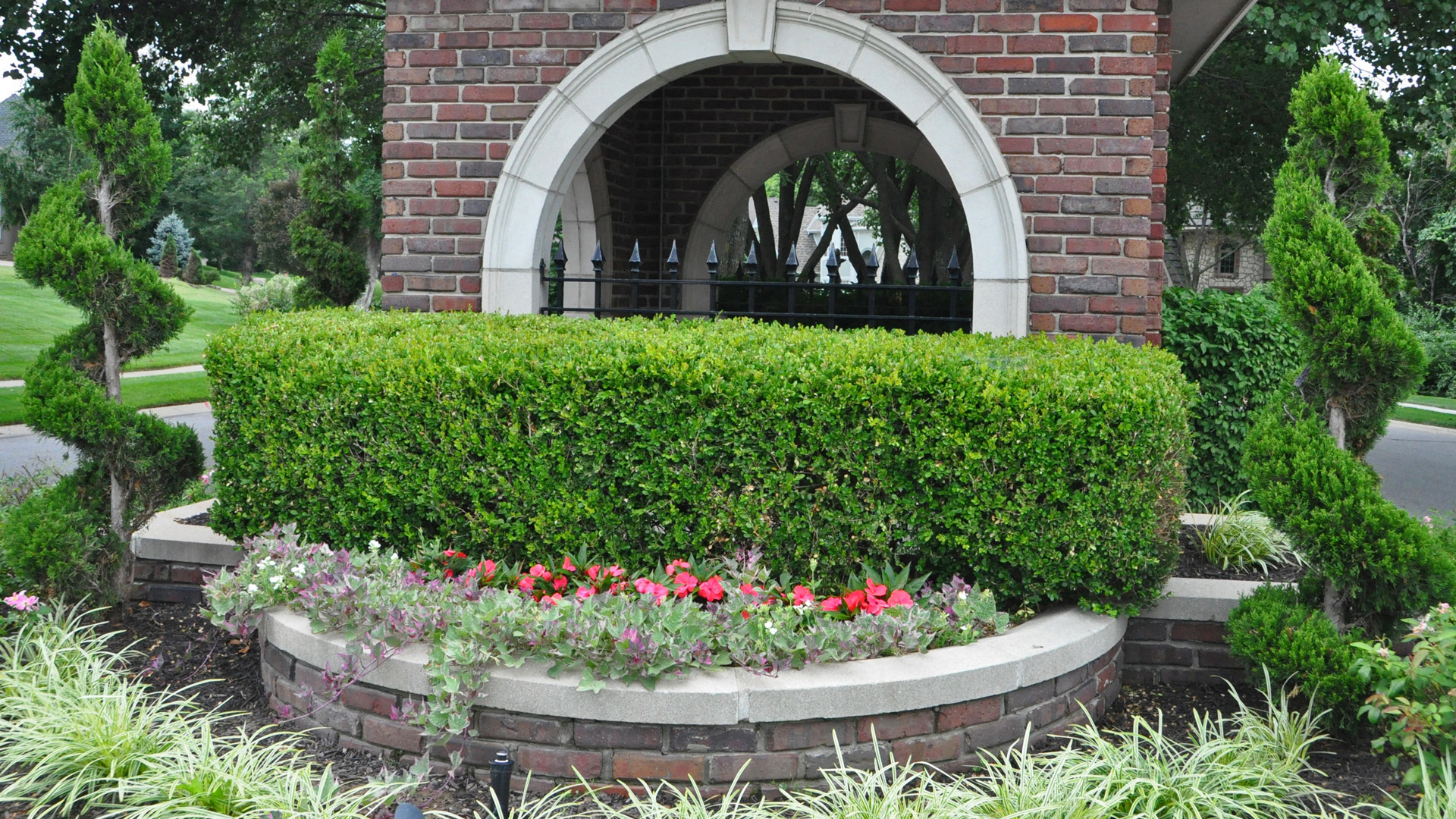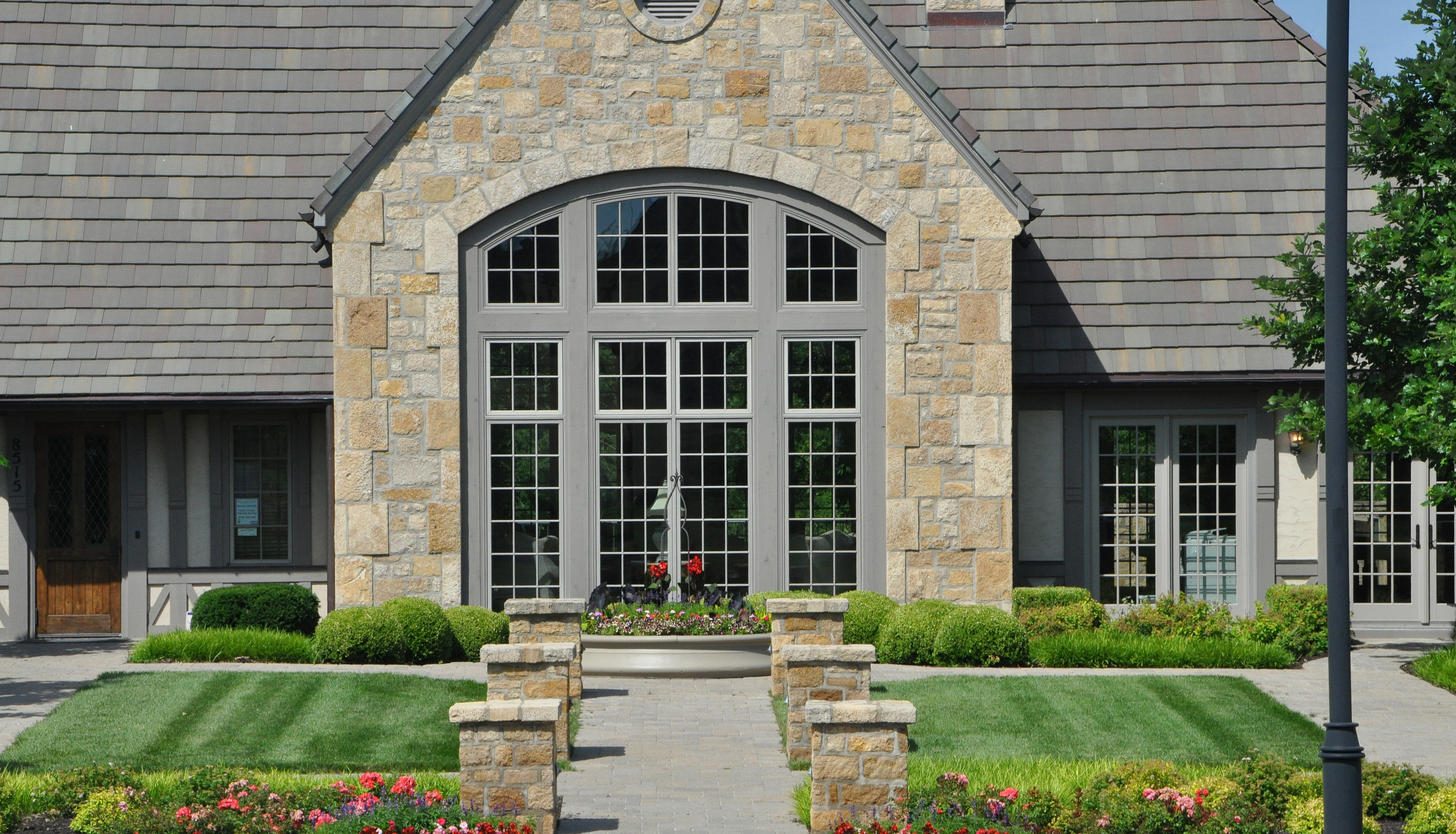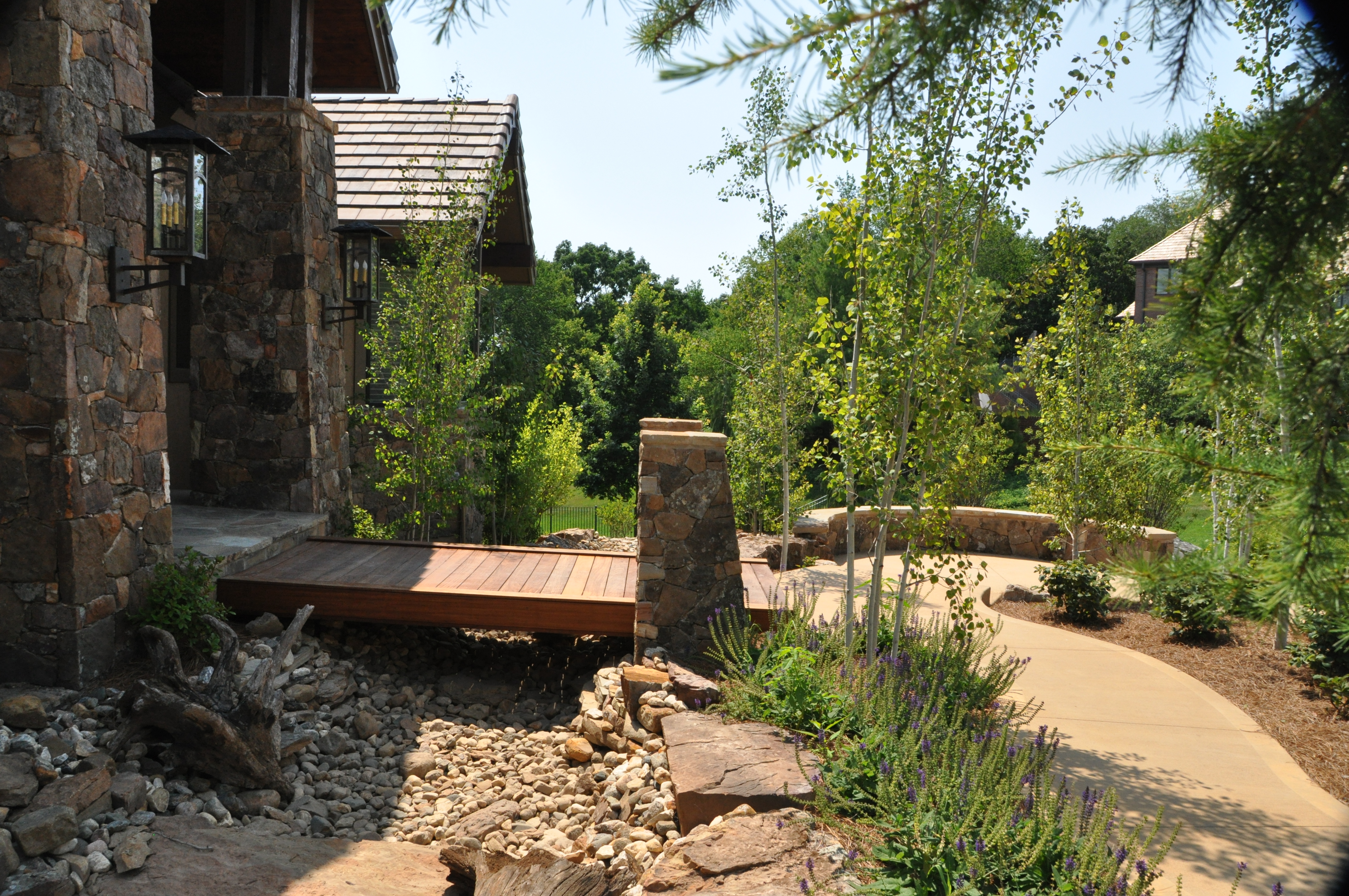Around the corner from where I live there is a house that I absolutely love. I didn’t realize it, but I must be commenting on it every time we go by because this weekend my husband actually pulled over, stopped the car and asked me to explain what it was that made that house so remarkable to me. The house, he pointed out, was really nothing spectacular — a simple brick bungalow very similar to ours. Why did this one attract me while those on either side (almost identical) didn’t even warrant a glance?
Really analyzing instead of just reacting, I realized that it was because of the front landscaping that I feet drawn to the home. It always seems warm and welcoming to me, but also a little mysterious and that’s what peaks my interest. Every time I see it, no matter the season, I feel the urge to walk through its arbor-graced entrance and discover the surprises that are beyond the gate and just out of my sight.

The houses on either side of my “favorite” are also nicely landscaped, but in a much more standard and traditional manner. Each has a few common shrubs in mulched beds by the front foundation and, for the summer months, several pots of brightly colored annuals. It’s obvious that both landscapes have been done with care, but there is no unique entryway element that sets either of them apart; there is nothing that says “begin your adventure here.”

Entryway landscaping is landscaping that announces the approach to your home and then entices visitors to continue a journey to the entry door. Strong entryway design not only complements the house and ties into the rest of the design, but also stands on its own. Having unique entryway landscaping instead of traditional foundation planting is an opportunity to not only enhance the curb appeal of your home, but to also give visitors and passers-by a peek into your personality.
Although gates or arbors are obvious points of entry and give a sense of stepping into a new space, they are not the only ways used to usher people into a home, a business or even an entire community. Sidewalks and steps, pathways and roadways commonly serve as entryways by architects and builders, directing visitors toward the front door. Unfortunately in many cases, they are purely functional and don’t reflect the personality of the owners or the mood of the place.

Even if the existing entry is marked by only basic, nondescript features such as a concrete sidewalks or asphalt roads, the right landscaping choices can easily transform those mundane elements into a distinctive entryway. To achieve that perfect entryway landscaping however, it helps to first clearly define the desires and expectations for the space.
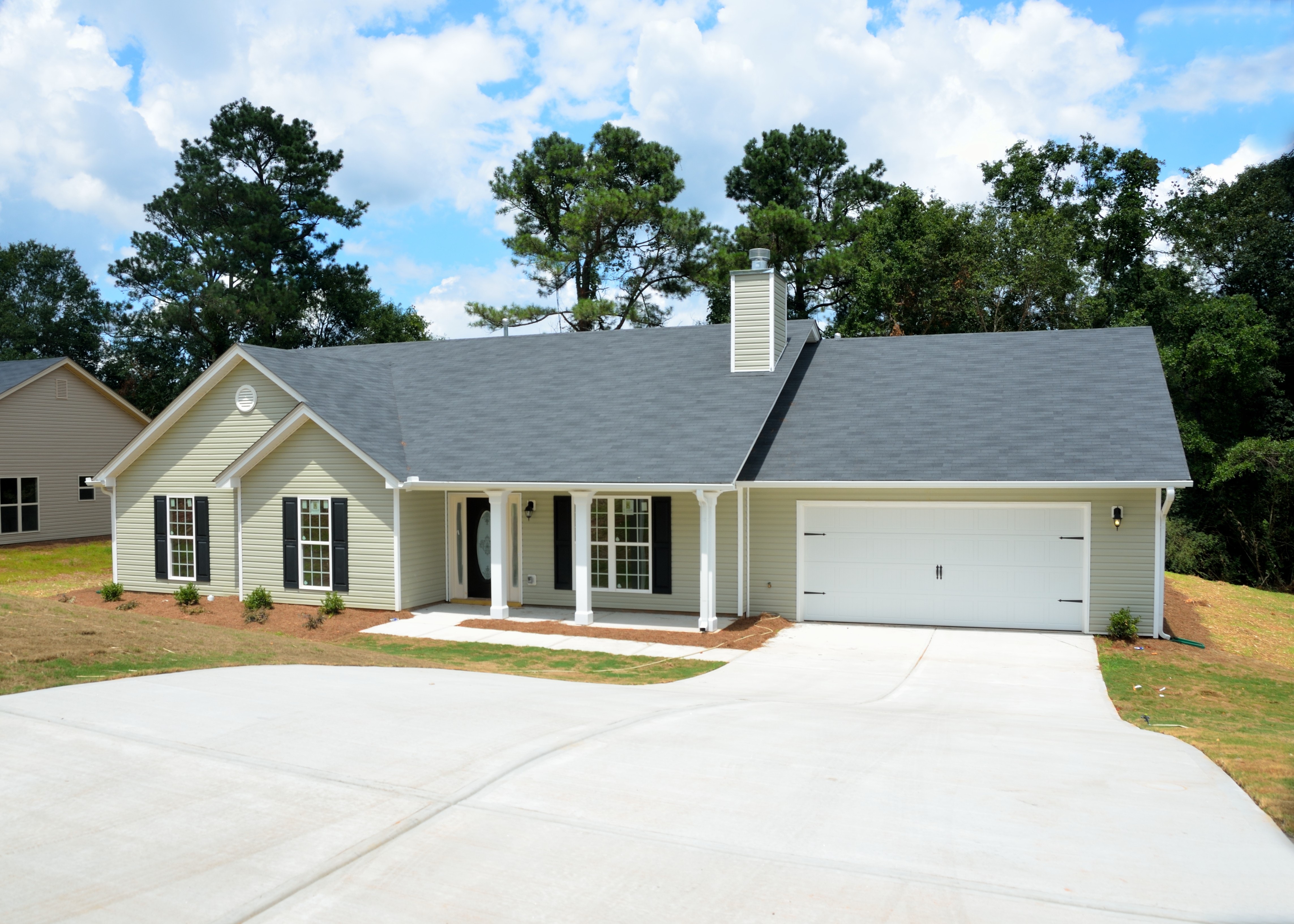
Regardless of whether it is the entryway to a single family residence or an entire community, the first consideration is the same. What message should the entryway send about its occupants? What mood is conveyed? Will those entering expect to be greeted by a precise and formal atmosphere that communicates order and symmetry, or will the tone be looser and relaxed, communicating informality and casualness? Are the occupants reserved, or do they tend to be more open?
Once the intended message has been determined, then the work to communicate that message begins. An essential question at this stage is: What elements will be used to communicate the intended message?
Basic to the choices however is the architectural style of the home, or in the case of a community, the style that is most prevalent. An entryway should complement the house, rather than compete with it. For example, a contemporary design often calls for a more minimalist approach, while an arts and crafts style suggests a naturalistic design.
The design style then guides the selection and placement of both plant material and hardscaping materials. A formal, traditional design generally features symmetrical placement of shrubs that have been carefully groomed to a specific shape –think a series of perfectly rounded boxwood at the foundation and rows of clipped yew hedges lining the walkways. On the other hand, a Cape Cod style hints at a cottage garden filled with billowing blossoms framed by a picket fence.
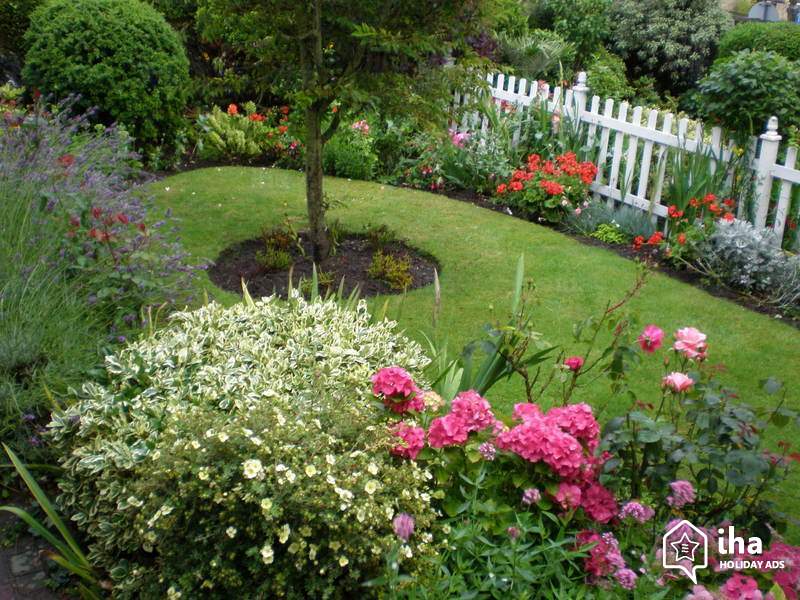
Hardscaping materials, such as those used for entryway pathways, landings, stairs or even driveways, should also support and strengthen the design. Paths constructed from irregular flagstone uniquely suit a country style farmhouse, while clay pavers enhance a home in the Southwest style.
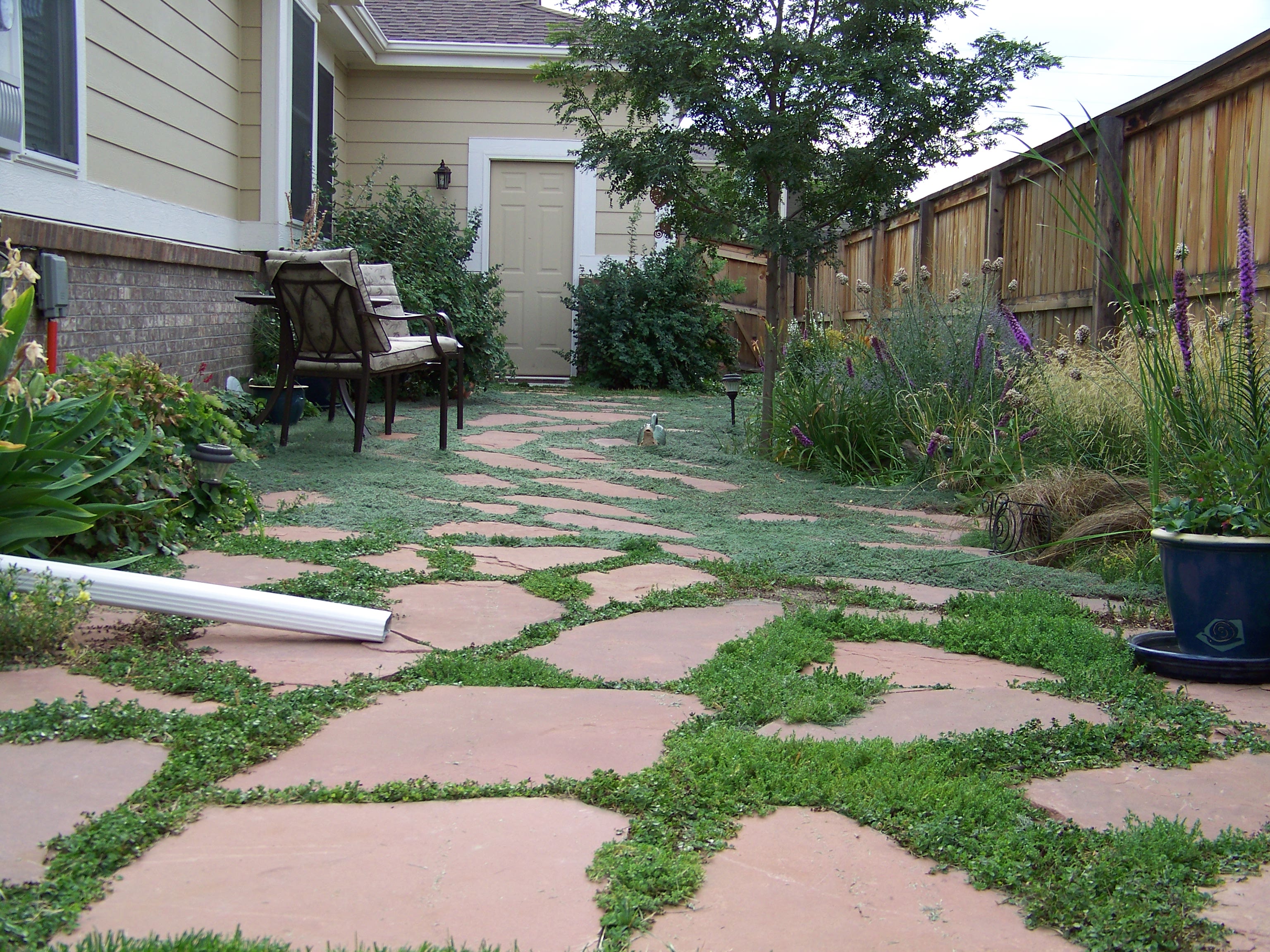

Regardless of the intended message or the architectural style there are a few design elements that apply to all residential entries. A fundamental principle is that the entryway landscaping should give a clear indication that it is leading visitors to the appropriate entrance. It should eliminate any confusion about where to enter the property.
Another basic principle is that an entry pathway should be at least 3 – 4 feet wide to allow enough room for two people to walk side by side. It should also be free from obstructions. Although a curving path can add anticipation to the journey, visitors should always have safe footing. Slick or uneven surfaces can be dangerous, causing unexpected falls.
Along the same lines, entryway lighting is also a critical feature. Approaches to the entry, as well as the entry point itself, should be well lit. Dark corners and deep shadows can be unsettling, especially on a first visit.
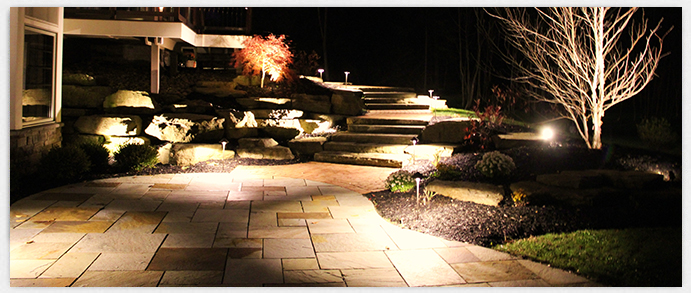
Finally, residential entryways should, if possible, offer some protection from the elements while visitors wait to be admitted or for those final goodbyes as people leave.
Having the right entryway design can make your home stand out from all the others. The designers at Embassy landscape Group can help you create an ideal entryway design — one that reflects exactly who you are! Call them today.

